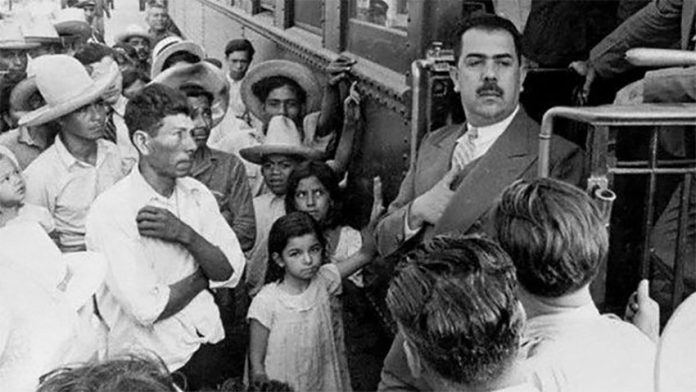“The best way to fight the traffickers,” declared Mexico’s El Universal newspaper in March 1940, a month after radical leftist President Lázaro Cárdenas legalized all drugs and set up a state-run dispensary to dish them out, “is to compete with them on the price of the merchandise.”
Then as now, it was an explosive idea: El Universal itself had branded marijuana “dangerous” only a couple of years previously. Yet it is tempting to speculate how the succeeding eight decades might have panned out had U.S. pressure not forced an end to that bold experiment after just four months.
President López Obrador, who swept to power in 2018, may not have needed to base his campaign around eradicating endemic corruption. Without the chance to skim off huge profits Mexico’s police and politicians might have been clean. Homicides might not now be pushing record levels of 35,000 a year and extortion rackets might not be multiplying.
But as The Dope, a magisterial and immensely readable new history of the Mexican drug trade by British academic Benjamin T. Smith shows, a century of prohibition — barring the 1940 interlude — has had disastrous and far-reaching consequences. Mexico is often seen as a case study of the destruction drugs and violence can wreak.
Whether wholesale legalization is the answer now, as the U.S. battles an opioid crisis claiming 130 lives a day, is an open question and not one Smith addresses.
![]()
Nor is it something that López Obrador wants to see, although it could happen very soon. Legislators have missed a host of deadlines to implement a 2019 Supreme Court ruling to legalize pot; either the court now strikes down articles in the general health law that criminalize cannabis, or lawmakers seek yet another extension.
Whatever happens, Mexico is on course to become the world’s biggest legal pot market, joining Uruguay and Canada — and the only producing country to liberalize the drug fully.
The problem, as The Dope describes in riveting detail, is that things may already have gone too far. Smith’s bleak conclusion is that as long as narcotics are outlawed, “incentives to produce and smuggle them will outweigh any economic alternatives.”
In some ways, the violence that Mexicans associate with the drug trade is these days more often about protection rackets — for drugs or other merchandise. Gangs, probably now numbering in the hundreds, have made extortion their main business. As a result, Mexico has descended into what some security analysts have dubbed “disorganized crime.” Or as Smith puts it, “by the mid-2010s, the everyday violence that most Mexicans experienced had little to do with the drug trade at all.”
López Obrador, who idolizes Cárdenas, has tried to ignore the issue of the drug trade as far as possible despite stubbornly high homicide levels topping the list of voters’ concerns. He has slammed the media for “sensationalizing” 37 candidates’ murders ahead of last Sunday’s midterm elections which saw him lose his two-thirds congressional supermajority.
In a scorching rebuke, the last U.S. ambassador in Mexico, Christopher Landau, said López Obrador had displayed a “laissez-faire” attitude toward cartels, which he considered a “distraction.”
The president had already been criticized for going out of his way to shake the hand of the mother of Mexico’s jailed top drug kingpin, Joaquín “El Chapo” Guzmán, and for his cuddly sounding, but so far ineffective, security strategy, dubbed “hugs not bullets.”
Yet, while he offers apprenticeships and grants to keep young people out of the clutches of cartels, and preaches non-confrontation — security forces released El Chapo’s son on the president’s orders in order to avert bloodshed after a fierce shootout in 2019 — he has reneged on a promise to return the army to barracks and has even created a militarized police force to tame cartel violence
Drawing on a decade of research, Smith traces the roots of Mexico’s multiple drug wars from indigenous remedy to the solace of soldiers during the 1910-1920 revolution, to the present day. His pacy narrative is true crime at its historical best, replete with all the larger-than-life characters and thrills and spills of a Netflix narco drama.
It even probes whether the real reason undercover Drug Enforcement Administration agent Kiki Camarena was kidnapped and killed in 1985 — a watershed moment for U.S. counternarcotics efforts in Mexico — was that he stumbled on a covert CIA drugs-for-arms operation.
The Dope is gripping and revealing — but ultimately depressing. Smith skates over what the future holds but it is hard not to agree with his conclusion: “A century and counting; the Mexican drug trade shows no sign of slowing.”
• The Real History of the Mexican Drug Trade, by Benjamin T. Smith, Ebury Publishing, 448 pages
© 2021 The Financial Times Ltd. All rights reserved. Please do not copy and paste FT articles and redistribute by email or post to the web.
